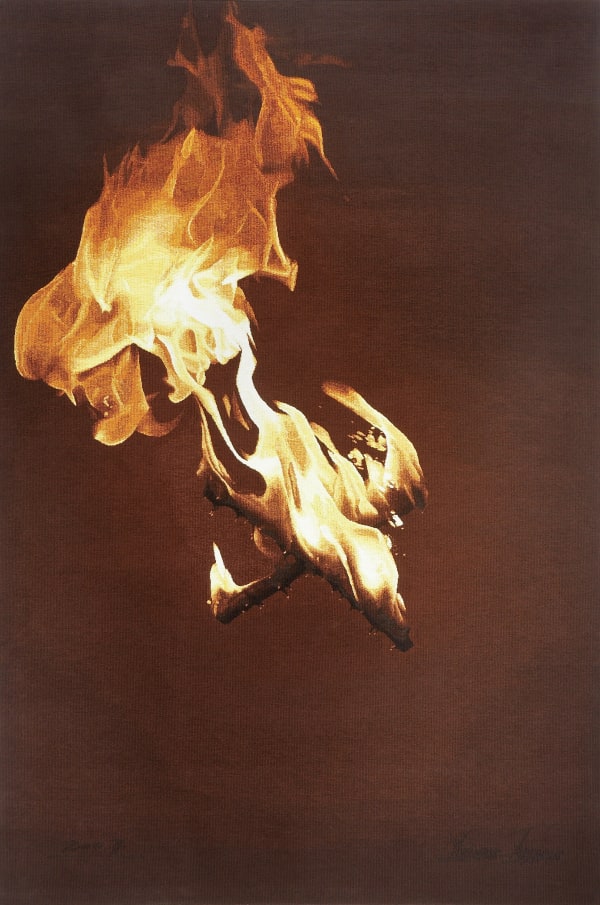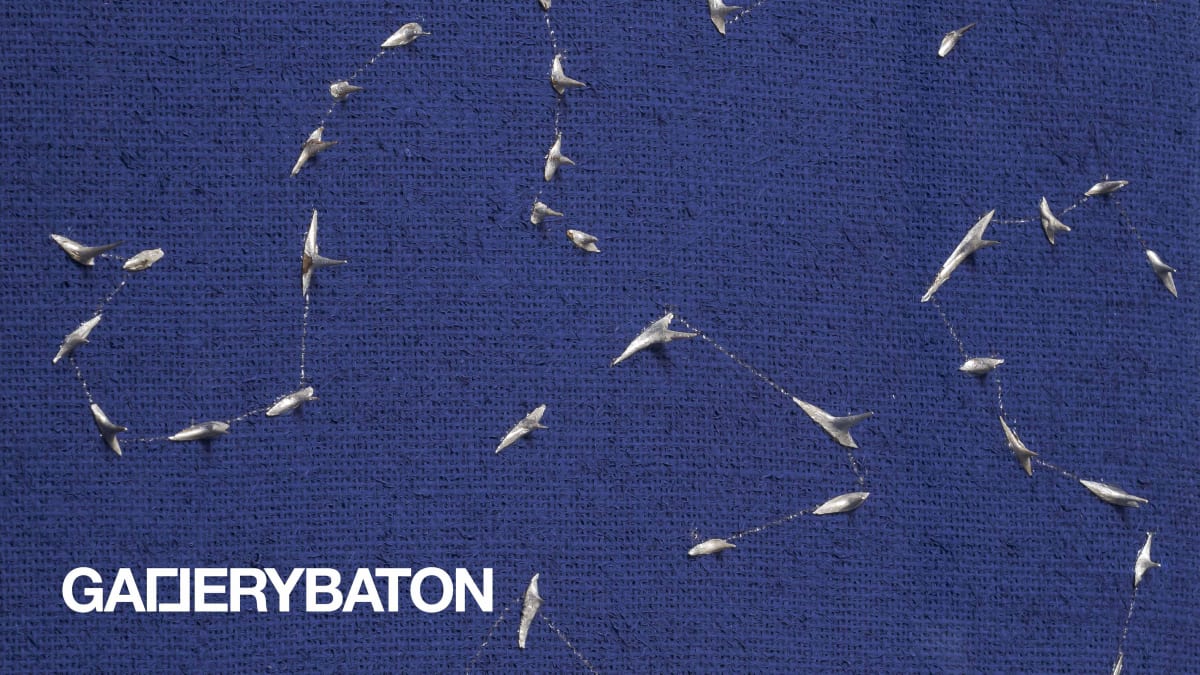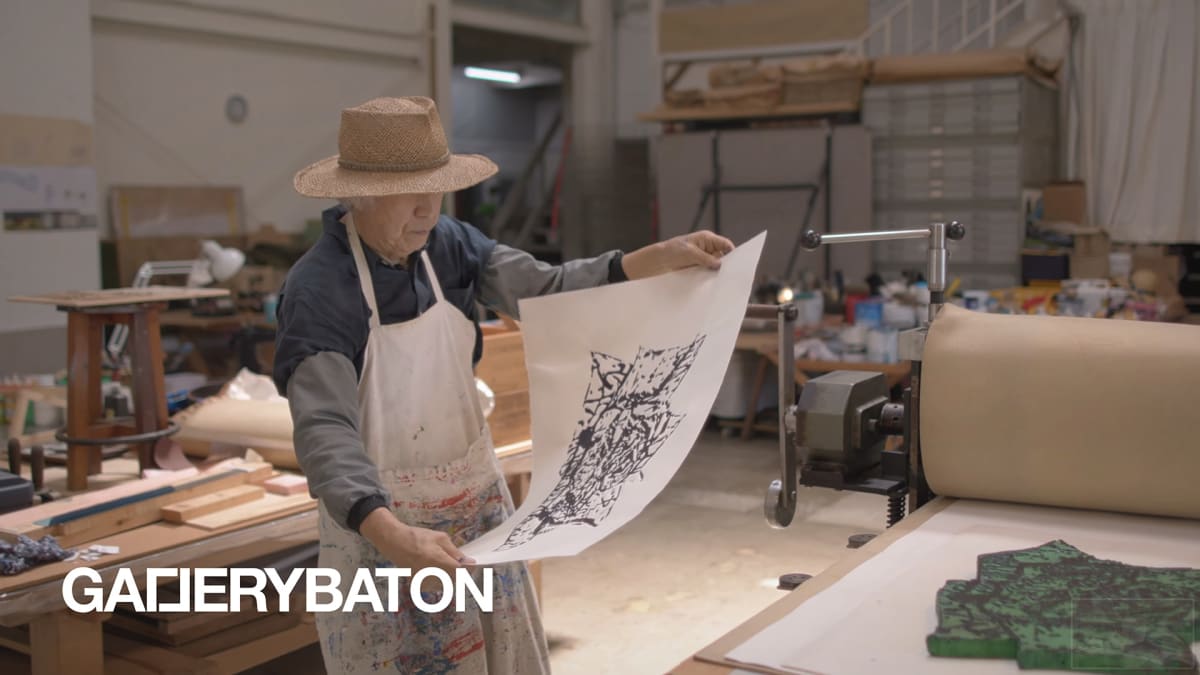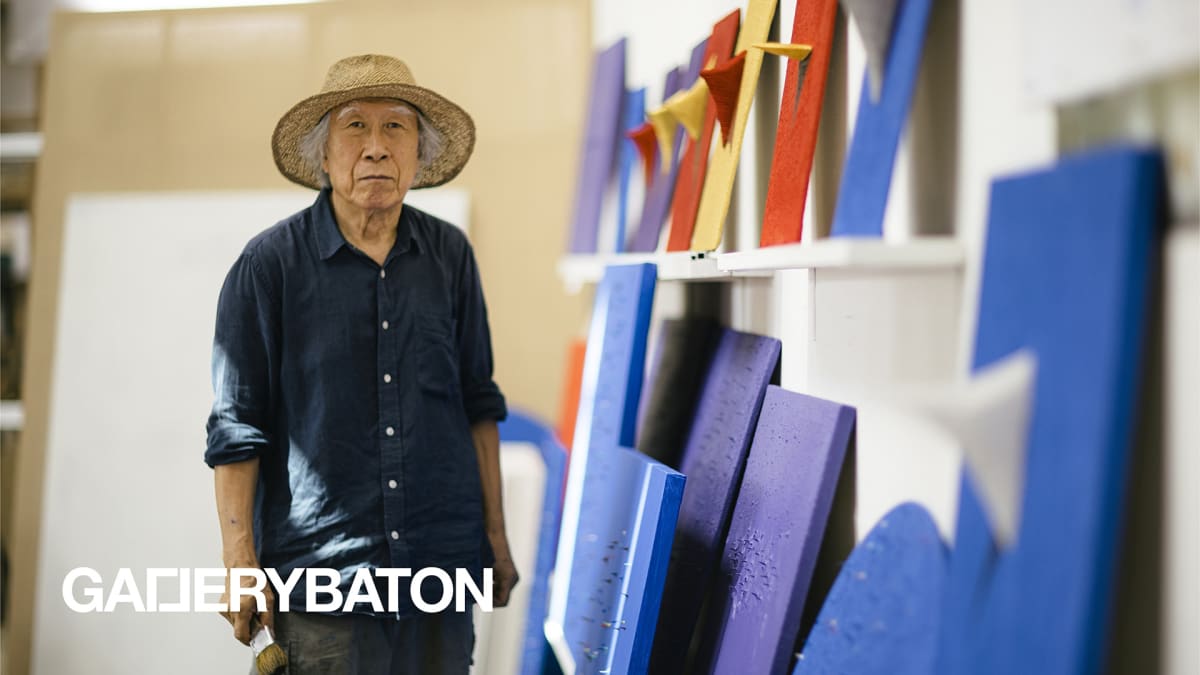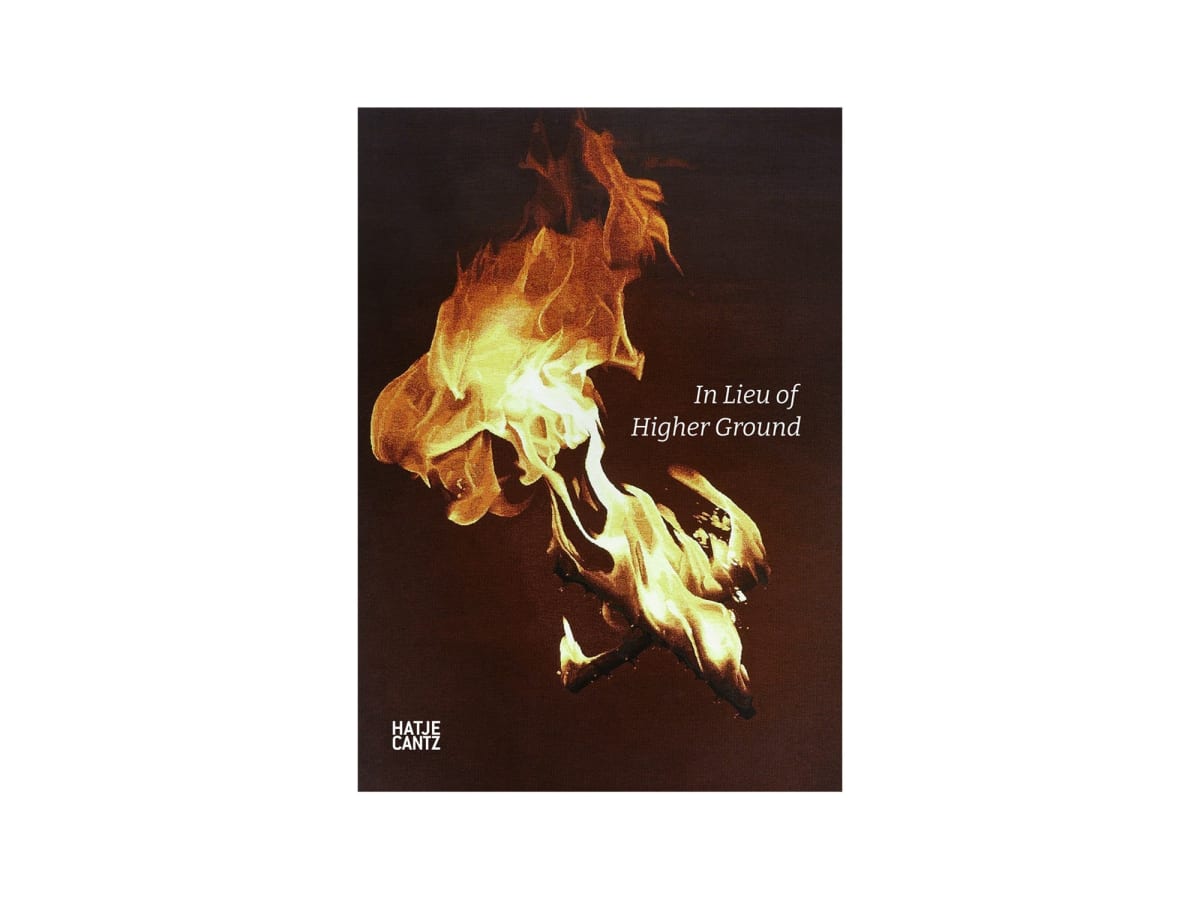Song Burnsoo Korea, b. 1943
Song Burnsoo is a leading figure of Korean modernism and a formative member of the Korean avant-garde movement. Spanning over half a century, Song developed an entirely new aesthetic interpretation of Korean painting traditions, contemplating existential themes through a deeply spiritual and formally innovative lens.
From the early stages in his career until the 1970s, his practice was informed by his encounters with social injustice, propelling him to voice himself critically through provocative prints, which borrowed from pop art elements. During his years in Paris, Song started experimenting with tapestry. The works conceived in this early stage of his career earned him popular and critical acclaim. Woven in a sophisticated manner, these works are grounded in and titled after profoundly personal experiences, and widely considered to represent his style. Upon his return from Paris in the mid 1970s, the thorn and its shadow became major motifs in his work. Deriving from his depiction of roses, which frequently appear in his print works, the sharp thorn protruding in all directions became a symbol intrinsically linked with Song’s artistic persona. As he deepened his spiritual reflection, his practice grew alongside his religious contemplation. Individual or clusters of thorns, which appear to emerge from within the canvas, effectively evoke notions of pain and sacrifice, darkness and hope, at once imbuing his paintings with tension and tangibility. In his most recent works, Song extended the symbolic meaning of the thorn from its solitary unit to planets, constellations and clusters, echoing his early, masterful witnessing of the world’s wonders.
Song Burnsoo lives and works in Yongin, Korea. He was a professor at the College of Fine Arts at Hongik University from 1980 to 2008 and a director of Daejeon Museum of Art. He is honorary professor at Hongik University and a director of the Maga Art Museum, which was established in 1998 to support young artists of textile crafts. In 2000, he received the decorated Order of National Service Merit in Korea, and in 2001 he won the first golden fleece prize on the occasion of the 1000th anniversary of the foundation of the Hungarian State. Along with the large-scale retrospective, <Song Burnsoo_Pantomime of 50 Years> in National Museum of Modern and Contemporary Art, Korea, his work has been featured in exhibitions in Gyeonggi Museum of Modern Art (2016), Museum of Fine Arts Budapest (2005), MMCA Korea (2003), Daejeon Museum of Art (2000), Busan Museum of Art (1999), Tokyo Metropolitan Art Museum (1987). His work is represented in the collections of MMCA Korea, Seoul Museum of Art, Busan Museum of Art, Daejeon Museum of Art, National Museum of Budapest and H.Q of Korean U.N., Switzerland.
-
 Song BurnsooPossibility 024-EII, 2024
Song BurnsooPossibility 024-EII, 2024 -
 Song BurnsooPossibility 024-DIV, 2024
Song BurnsooPossibility 024-DIV, 2024 -
 Song BurnsooPossibility-Constellation 022-III, 2022
Song BurnsooPossibility-Constellation 022-III, 2022 -
 Song BurnsooPossibility 024-DIII, 2024
Song BurnsooPossibility 024-DIII, 2024 -
 Song BurnsooPossibility 023-CV, CVI, CVII, 2023
Song BurnsooPossibility 023-CV, CVI, CVII, 2023 -
 Song BurnsooPossibility #21BS081, 2021
Song BurnsooPossibility #21BS081, 2021 -
 Song BurnsooPossibility 022-IXIV, 2022
Song BurnsooPossibility 022-IXIV, 2022 -
 Song BurnsooKnow Yourself, 2007
Song BurnsooKnow Yourself, 2007 -
 Song BurnsooSouth Gate (Soongnyemoon) of Seoul, 1988
Song BurnsooSouth Gate (Soongnyemoon) of Seoul, 1988 -
 Song BurnsooThe Principle of Relativity, 1988
Song BurnsooThe Principle of Relativity, 1988 -
 Song BurnsooThe Purity that I Haven’t Owned through My Life, 1995
Song BurnsooThe Purity that I Haven’t Owned through My Life, 1995 -
 Song BurnsooFiber Drawing, 1987
Song BurnsooFiber Drawing, 1987 -
 Song BurnsooPossibility 022-KI, 2022
Song BurnsooPossibility 022-KI, 2022 -
 Song BurnsooPossibility 024-EIII, 2024
Song BurnsooPossibility 024-EIII, 2024 -
 Song BurnsooPossibility 022-IIX , 2022
Song BurnsooPossibility 022-IIX , 2022
-

Song Burnsoo — Possibility Series
Special Survey Exhibition 25 April - 25 May 2024Read more -

Song Burnsoo
Know Yourself 23 August - 24 September 2022Read more -

In Lieu of Higher Ground
Park Suk Won, Park Jang Nyun, Song Burnsoo 30 January - 29 February 2020Gallery Baton is pleased to present ‘In Lieu of Higher Ground’, a group exhibition by three Korean contemporary artists, Park Suk Won, Park Jang Nyun and Song Burnsoo, from 30th January to 29th February, 2020. The exhibition attempts to highlight the life-long commitment to creation by three masters who have a great influence upon the process of establishing the current hybrid cultural-geography of ‘Korean contemporary art’ from its beginning period to the present phase which conveys diversified identities and zeitgeist. The title, ‘In Lieu of Higher Ground’, implies the remarkable achievement of the three artists whose life consequently became their artistic trajectories by embracing an attitude of seeking unity of the physical and the spiritual. As they have dedicated their entire life to investigating into aesthetic accomplishment and manifestation of their own creative world instead of chasing after personal fame and materialistic advancement, we dare to speak that they have silently but stubbornly broadened the scope of their artistic territories by exploring unknown realms from a perspective of a seeker rather than trying to set up another monument on the existing land—Korean contemporary art.Read more
-

Song Burnsoo, Suzanne Song, Heeseung Chung
45cm at Chapter II 9 May 2024Gallery Baton is pleased to announce Song Burnsoo, Suzanne Song and Heeseung Chung participate to a Group Exhibition, 45cm at Chapter II, Korea Song Burnsoo,...Read more -

Song Burnsoo
Only the Young: Experimental Art in Korea, 1960s–1970s at Hammer Museum 11 February 2024Gallery Baton is pleased to announce Song Burnsoo participates to a Group exhibition , Only the Young: Experimental Art in Korea, 1960s–1970s at Hammer Museum,...Read more -

Song Burnsoo
Only the Young: Experimental Art in Korea, 1960s–1970s at Solomon R. Guggenheim Museum 1 September 2023Gallery Baton is pleased to announce Song Burnsoo participates to a Group exhibition , Only the Young: Experimental Art in Korea, 1960s–1970s at Solomon R....Read more -

Song Burnsoo
Only the Young: Experimental Art in Korea, 1960s–1970s at MMCA Seoul 26 May 2023Gallery Baton is pleased to announce Song Burnsoo participates to a Group exhibition , Only the Young: Experimental Art in Korea, 1960s–1970s at MMCA, Korea...Read more -

Song Burnsoo
A Compass at Daedam Museum 29 June 2021Gallery Baton is pleased to announce a solo exhibition by Song Burnsoo, A Compass at Daedam Museum, Korea. Song Burnsoo A Compass 29 June 2021...Read more








